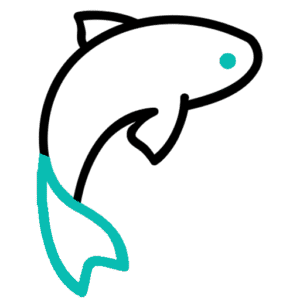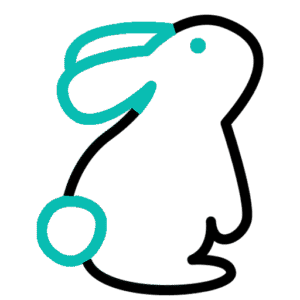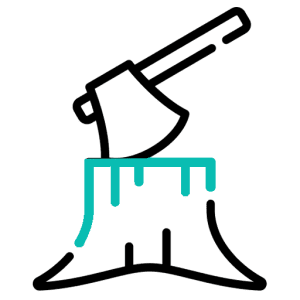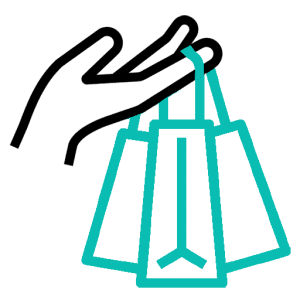In an era where sustainability is no longer a luxury but a necessity, the materials industry is undergoing a transformative shift toward eco-friendly innovations. The latest white space analysis by the Material Innovation Initiative (MII) and The Mills Fabrica delves into the burgeoning field of next-gen materials, highlighting both the triumphs and challenges that define this dynamic sector. These next-gen materials aim to replace conventional animal-based products like leather, silk, wool, fur, and down with sustainable alternatives that mimic their look, feel, and functionality. Unlike traditional synthetic substitutes made from petrochemicals, next-gen materials leverage bio-based ingredients such as microbes, plants, and fungi, striving to minimize their carbon footprint and environmental impact.
The report identifies seven key opportunities for growth and innovation within the next-gen materials industry. It underscores the need for diversification beyond next-gen leather, which currently dominates the market, leaving other materials like wool, silk, and down underexplored. Additionally, the analysis points out the critical need for completely sustainable ecosystems, urging the development of bio-based, biodegradable binders, coatings, and additives to replace harmful petrochemical derivatives. The call for 100% bio-based synthetic fibers to counteract the environmental hazards posed by polyester further emphasizes the industry’s commitment to sustainability.
Moreover, the report advocates for the incorporation of new biofeedstock sources, such as agricultural residues and algae, to create more sustainable fibers. It also highlights the importance of versatile end-of-life options for next-gen products, promoting a circular economy where materials can be recycled or biodegraded with minimal environmental impact. The analysis stresses the necessity for R&D teams to deepen their expertise in materials science, particularly in understanding structure-property relationships to enhance the performance and sustainability of next-gen materials. it calls for scaling up biotechnological approaches, such as cellular engineering, to advance the development of lab-grown materials.
As the next-gen materials industry continues to evolve, this white space analysis serves as a crucial roadmap for innovators and investors, guiding them toward sustainable and profitable ventures in the quest to revolutionize the materials landscape.
Summary By: Dr. S. Marek Muller | Original Study By: Material Innovation Initiative. (2021) | Published: July 12, 2024
A white space analysis identified present successes, difficulties, and opportunities in the “next-gen” materials industry.
White space analyses are detailed reports on existing markets. They identify the state of the market, including what products, services, and technologies exist, which are succeeding, which are struggling, and potential market gaps for future innovation and entrepreneurship. This detailed white space analysis of the “next-gen” animal alternative materials industry was formed as a follow-up to a June 2021 state-of-the-industry report by the Materials Innovation Initiative. MII is a think tank for next-gen materials science and innovation. In this report, they partnered with The Mills Fabrica, a known investor in the next-gen materials industry.
Next-gen materials are direct replacements for conventional animal-based materials such as leather, silk, wool, fur, and down (or “incumbent materials”). Innovators use “biomimicry” to copy the look, feel, and effectiveness of the animal products being replaced. However, next-gen materials are not the same as “current-gen” animal alternatives such as polyester, acrylic, and synthetic leather made from petrochemicals like polyurethane. Next-gen materials tend to use “bio-based” ingredients — not plastic — in order to minimize their carbon footprint. Bio-based materials include microbes, plants, and fungi. While not every part of next-gen material production is entirely bio-based, the industry is striving toward sustainable innovation through emerging green chemistry technologies.
The white space analysis identifies seven key opportunities for innovation in the next-gen materials industry.
- There are several next-gen materials with limited innovation. A disproportionate amount (approximately 2/3) of innovators in the industry are involved in next-gen leather. This leaves next-gen wool, silk, down, fur, and exotic skins under-invested and under-innovated, providing ample opportunities for future growth. Compared to the leather industry, these other next-gen materials would result in a lower volume of production but have potential for higher profit per unit.
- The report highlights challenges in making next-gen ecosystems 100% sustainable. Although the industry incorporates “feedstock” like agricultural waste and microbial products, the formulation of next-gen textiles often still requires petroleum and hazardous materials. Of particular concern are polyvinyl chloride and other vinyl-based polymers, which are often found in synthetic leather. Despite its durability, it is one of the most damaging plastics due to its reliance on fossil fuels, release of hazardous compounds, use of harmful plasticizers, and low recycling rate. Bio-based polyurethane offers a promising alternative, but is still in development. The authors suggest that innovators and investors must develop and commercialize bio-based, biodegradable versions of binders, coatings, dyes, additives, and finishing agents.
- They encourage next-gen innovators to create 100% bio-based synthetic fibers to counter the use of polyester. Currently, polyester accounts for 55% of all textile raw materials produced annually. Because it’s petroleum-based, it is considered “public enemy number one” in the sustainable fashion industry. Polyester is a complicated material in that it currently functions as a “current-gen” replacement for materials such as silk and down. However, it is also an environmental risk, as it can release microfibers into the environment. The report advocates for sustainable improvements to current-gen strategies via developing bio-based polyester fibers. Current innovations are in process to create recyclable polyester, but end-of-life biodegradability issues remain a concern.
- The authors encourage investors and innovators to incorporate new biofeedstock into next-gen materials. In other words, they call for new discoveries and technologies in natural and semi-synthetic (cellulosic) fibers. Plant fibers such as cotton and hemp make up ~30% of global fiber production. Meanwhile, semi-synthetics like rayon make up ~6%. Despite being drawn from plants, these fibers still cause sustainability concerns. Cotton, for instance, uses 2.5% of the world’s arable land, yet 10% of all agricultural chemicals. Agricultural residues, such as residue from rice and oil palm, offer viable options for upcycling into usable fibers. Algae, which is 400 times more efficient than trees at removing CO2 from the atmosphere, also has potential as a new source of biofeedstock.
- The analysis calls for increased versatility in next-gen products’ end-of-life options. According to the authors, next-gen suppliers, designers, and manufacturers have a responsibility to understand how material selection impacts the fate of their product. Up to 30% of microplastic pollution may originate in textiles, which have a variety of end-of-life scenarios. They may be dumped in a landfill, burned for energy, or discarded in the environment. More promising options include re/upcycling and biodegradation. Innovators should work toward a “circular economy,” where material production, use, and disposal are in a reciprocal relationship, minimizing overall waste. Additionally, materials should be able to be either recycled or biodegraded, minimizing consumer burden. A potential player in this area is polylactic acid (PLA), a fermented starch derivative, which is currently used to make degradable plastics. 100% PLA garments may be available in the future.
- The authors call for research and development (R&D) teams to increase their expertise in the core principles of materials science. In particular, next-gen researchers and developers must understand structure-property relationships. Mastering this relationship will allow R&D teams to gauge how specific material properties inform a material’s performance and how to fine-tune material composition, structure, and processing to achieve the desired performance. Doing so can help R&D teams pivot from a “top-down” approach to materials design that emphasizes the look and feel of a novel product. Instead, biomimicry can function as a “bottom-up” approach to materials design that considers sustainability and durability in addition to next-gen materials’ aesthetics. One option is to use recombinant protein synthesis — using lab-grown animal cells to grow “skin” without the animal itself. For example, lab-grown “hide” could be processed and tanned like animal-sourced leather.
- It calls for innovators to scale up their use of biotechnology, specifically within the area of cellular engineering. Many next-gen materials rely on biotechnological approaches, such as the aforementioned lab-grown leather made from cultured cells. The authors emphasize that as biotechnology advances in next-gen material creation, innovators should be mindful of five process considerations: the chosen production organism, the way to supply nutrients to the organism, how to keep cells “happy” for maximal growth, how to harvest/convert into the desired product, and scale-up. Scale-up, or the ability to supply a large volume of a product at a reasonable cost, is key to predicting a next-gen material’s commercial success. Doing so can be difficult and expensive in next-gen spaces. Luckily, a number of accelerators and incubators are available to help innovators.
In addition to the seven white spaces discussed, the authors recommend that the next-gen materials industry learns lessons from the alternative protein industry. This is due to the two industries’ similarities in purpose and technology. For example, next-gen innovators could look into mycelial growth (mushroom-based technology). The alternative protein industry uses mycelial growth for food and precision fermentation. However, because of mycelium’s unique structure and properties, it’s a promising alternative to leather. The next-gen materials industry, like its alternative protein counterpart, must also focus on creating consumer demand. One way to do so is through popular fashion brands adopting animal-free materials.
Overall, the next-gen materials industry is promising. One survey showed that 94% of respondents were open to purchasing them. The authors are optimistic that sales of next-gen direct replacements for animal-based materials will increase up to 80% annually over the next five years. Once next-gen materials match the affordability and effectiveness of current-gen materials, the industry can spearhead the drive towards a more sustainable future.
Notice: This content was initially published on Faunalytics.org and may not necessarily reflect the views of the Humane Foundation.















































